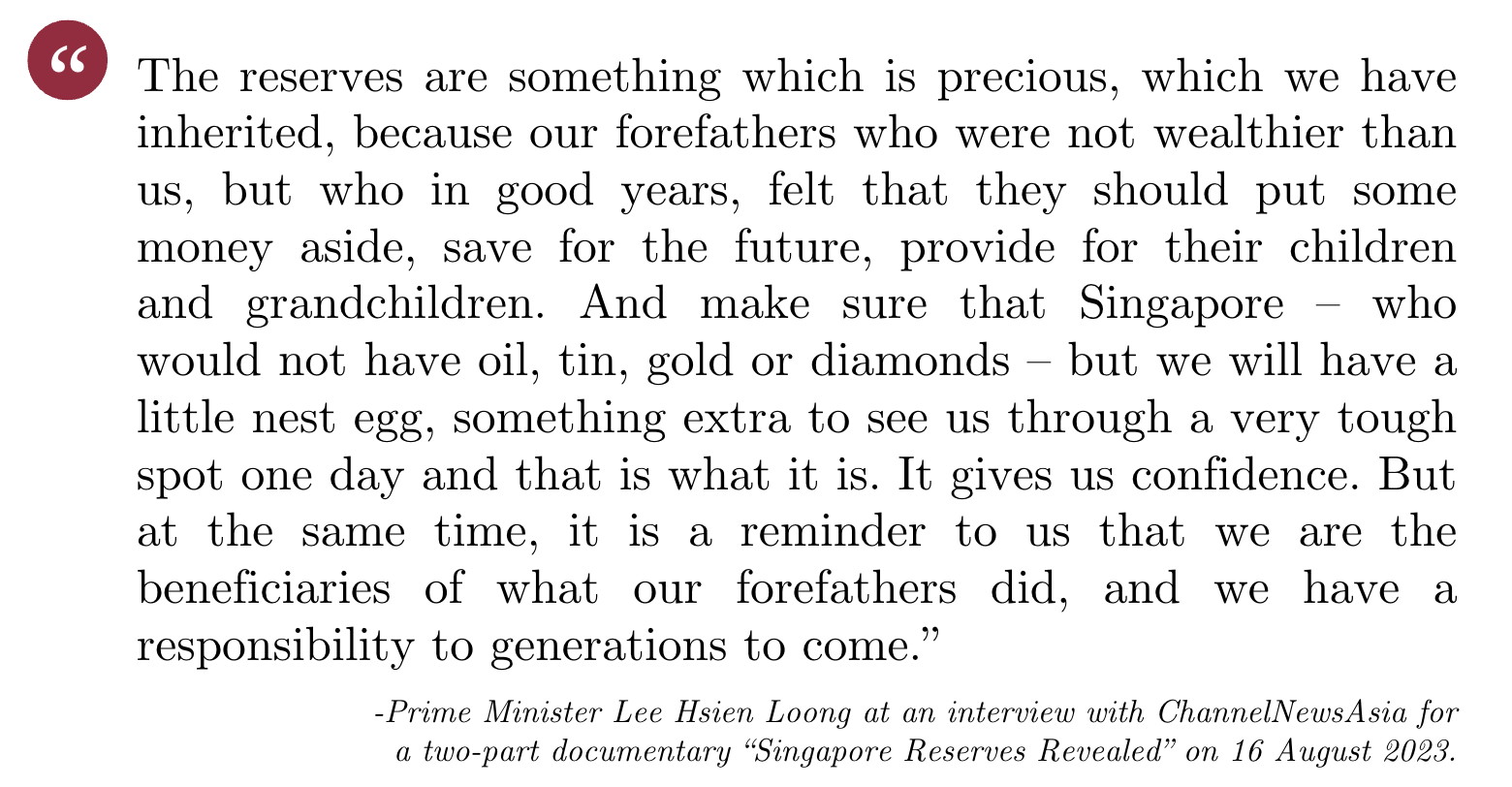1997 to 2009: Overcoming Multiple Crises
In spite being marked as one of the most difficult periods since independence, Singapore endured the Asian Financial Crisis, SARS, and the Global Financial Crisis
1997 to 2009: Overcoming Multiple Crises
In 1997, the Asian Financial Crisis swept the region, toppling governments and bankrupting companies, governments, and individuals. Singapore was also affected, and sunk into a deep recession in 1998. As companies folded under the poor economic conditions, thousands of Singaporeans lost their jobs.
The Asian Financial Crisis was the first of many crises that emerged in this 12-year period, and marked this period one of the most difficult in Singapore’s history since independence. In 2003, Singapore experienced SARS, which spread in the region and impacted travel. In 2008, the world was then confronted with the Global Financial Crisis.
Fortunately, we were able to weather these crises well, largely due to our strong reserves and prudent fiscal policies.
Singapore’s Constitution states that the government’s budget must be balanced over its term of office. In other words, the government cannot spend beyond its means.[^1]
Over the years, the government has been regularly recording surpluses as reserves. These past reserves cannot be spent without the approval of the Elected President. This ensures fiscal sustainability and prevents irresponsible spending. These reserves have, in turn, been invested to generate returns.[^2]
The reserves acts as a buffer against external shocks. In 1997, during the Asian Financial Crisis, though Singapore was not spared from the financial contagion, we were much less affected than our neighbouring countries.
Similarly, Singapore was able to draw on its reserves during the global financial crisis in 2008. In this period, banks collapsed and this threatened to tip the world into another depression. Governments rallied to prevent the catastrophe and spent trillions in the process. In 2009, Singapore tapped its reserves for the first time, taking out $4.9 billion to support the economy.[^3]
The measures worked. In 2010, Singapore’s economy grew 10%, among the fastest in the world. The strong economic recovery allowed the government to later return the S$4.9 billion to the reserves.^4
The strong reserves also give the government additional spending power to plan for Singapore’s future. In FY2009, the laws were tweaked to allow the government to draw on the returns from the reserves to fund its budget under the Net Investment Returns Contribution (NIRC) framework.[^5]
This sustainable approach to budgeting has had multiple benefits.
The returns generated over the years have been used by the government for its spending. For instance, between FY2015 and FY 2020, the NIRC supplied the government with about $90 billion of additional funds. Examples of large-ticket items that have been directly or indirectly funded by the returns include the Pioneer Generation Package, upgrading of transport infrastructure and the rise in social spending.
The government has also regularly distributed the surpluses to Singaporeans so the wider population can share in the country’s growing wealth.
Singapore also drew on our reserves to support the economy and Singaporeans during the COVID-19 pandemic. This explained why Singapore was the first in Asia to secure the Pfizer-BioNTech’s COVID-19 vaccine quickly.[^6]
The reserves were built by a country that had no natural resources, but through discipline and the hard work of its people, noted Prime Minister Lee Hsien Loong:

Watch ChannelNews Asia 2-part documentary on the management of our national reserves below.
Singapore Reserves: The Untold Story (Ep 1/2)
Singapore Reserves: The Untold Story (Ep 2/2)
CNA’s Singapore Reserves Revealed series telecast on 16 and 17 August 2023 provides insights on Singapore’s national reserves, featuring interviews with insiders and Singapore leaders. The videos cover (a) where Singapore’s reserves are invested and how much is in our reserves; (b) how this “inheritance” almost did not exist; (c) the inner workings of the Government of Singapore Investment Corporation (GIC) and Temasek; (d) the two rare occasions when the government made huge drawdowns of the reserve; and (e) how the reserves ensured that Singapore keeps functioning.[^7]
The biggest misconception amongst Singaporeans is that Singapore has “so much” reserves. However, Singapore is not over-saving. In fact, the national reserves are growing at a rate that is barely keeping pace with economic growth.[^8]
The investment returns being channelled back into the national reserves is key to building up the country’s coffers in the long run. If we do not have anything going back to the reserves, the value of our reserves will diminish over time.^9
When the global financial crisis happened in 2008, it turned out that we needed about four to five billion dollars. During the COVID-19 pandemic between 2020 and 2022, the government needed to draw over $40 billion from the reserves. We have no idea how much we may need in future as the COVID-19 crisis may not be the worst thing that can happen to us.[^10]
We can think about our national reserves as “rainy day money” that we put aside for the future – if it is not raining, we do not touch it. If it is a sunny day and we can afford it, we put a little more into it. We are here today and benefiting because our forefathers did that. Similarly, we can build our reserves up a little bit more every day so that our next generation will be in a more secure position than we are today.
Bibliography
[^1]: Gov.sg (2014, February 17) What is the budget process?.
[^2]: CAPE Singapore, (Aug 2023), What is the Singapore Budget?, retrieved from: https://capesingapore.com/wp-content/uploads/2023/08/What-is-the-Singapore-Budget.pdf
[^3]: Tang, S.K. (2023, August 17). Singapore not ‘oversaving’ with reserves ‘barely keeping pace’ with its economy: DPM Wong.
[^5]: Ministry of Finance (2025), What are the Reserves Used For, retrieved from: https://www.mof.gov.sg/policies/reserves/what-are-the-reserves-used-for/
[^6]: Prime Minister's Office. (2023, August 16). PM Lee Hsien Loong’s Interview with CNA for two-part documentary “Singapore Reserves Revealed”.
[^7]: ChannelNewsAsia. (2023, August 17). Singapore Reserves Revealed [Television Series].
[^8]: Tang, S.K. (2023, August 17). Singapore not ‘oversaving’ with reserves ‘barely keeping pace’ with its economy: DPM Wong.
[^10]: Prime Minister's Office. (2023, August 16). PM Lee Hsien Loong’s Interview with CNA for two-part documentary “Singapore Reserves Revealed”.
